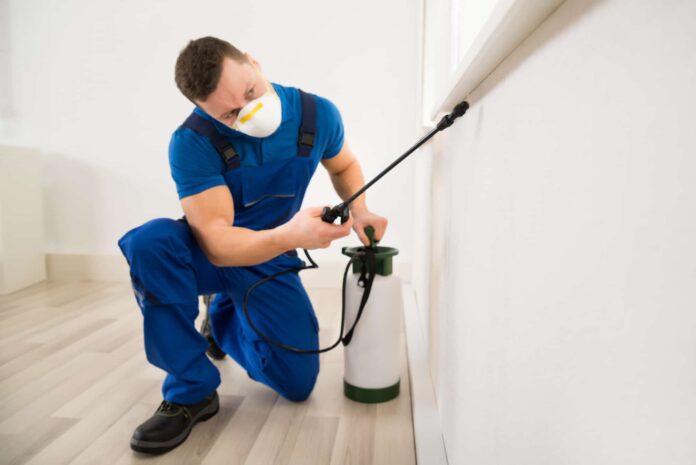Welcome to our complete manual for pest control Sunshine Coast! If you are dealing with pesky pests invading your property or company employer in this lovable vicinity of Australia you have been given the right area. We understand the disappointment and inconvenience that pests can deliver this is why we’re here to provide you with all of the records you need to properly deal with any pest hassle you could come across.
Understanding Pest Control on the Sunshine Coast
Before diving into precise pest manipulation techniques it’s far vital to understand the right pest demanding situations confronted inside the Sunshine Coast vicinity. With its warm temperature weather and various surroundings, Sunshine Coast is susceptible to numerous pests, collectively with but now not limited to:
Ants: Common invaders in every residential and commercial enterprise home ants can rapidly become a nuisance mainly in some unspecified time in the future of hotter months.
Termites: Known for his or her poor capabilities termites pose a first-rate hazard to the structural integrity of houses and houses in Sunshine Coast.
Cockroaches: These resilient pests thrive in warm temperatures and humid environments, making them a not unusual sight in kitchens and toilets, and brought into attention taken into consideration in every kind of a kind region with meals and moisture.
Rodents: Rats and mice are adept at finding their way into homes seeking out food and comfy haven posing health dangers and inflicting property harm.
Effective Pest Control Solutions
When it consists of pest management in Sunshine Coast the use of powerful answers is vital to retaining a pest-loose environment. Here are some pest control strategies and techniques that have been tested to be effective in addressing common pest issues:
1. Integrated Pest Management (IPM)
Integrated Pest Management is a holistic method of pest manipulation that specializes in prolonged-time period prevention and management of pests through environmentally sensitive strategies. This method emphasizes:
Inspection: Thoroughly reading the property to understand pests getting proper entry to factors, nesting internet internet websites, and conducive conditions.
Prevention: Implementing measures to get rid of or reduce factors that appeal to pests, alongside food belongings, water leaks, and clutter.
Control: Utilizing a combination of non-chemical and centered chemical remedies to manipulate pest populations at the same time as minimizing environmental impact.
2. Termite Control
Given the huge hazard posed by termites on the Sunshine Coast, enforcing effective termite manipulation measures is critical for shielding assets investments. Some termite control strategies encompass:
Chemical Barriers: Applying liquid termiticides sooner or later on the threshold of houses to create a defensive barrier in opposition to termites.
Termite Baiting Systems: Installing bait stations strategically in a few unspecified times within the destiny of the belongings to draw and dispose of termite colonies.
Three. Ant Management
Controlling ant infestations requires a multi-faceted technique to disrupt their foraging trails and dispose of nesting net websites. Effective and management strategies encompass:
Exterior Perimeter Treatments: Applying residual pesticides spherically out of doors of houses to prevent ants from getting into.
Ant Baits: Placing ant baits in strategic places to draw and do away with ant colonies at their delivery.
Four Rodent Exclusion
Preventing rodent infestations consists of sealing off functionality to get proper admission to factors and implementing measures to deter rodents from entering into homes. Key rodent exclusion strategies embody:
Sealing Entry Points: Closing gaps and cracks in constructing exteriors to save rodents from gaining the right of access.
Trapping: Using traps to capture and do away with rodents from indoor environments.
Professional Pest Control Services in Sunshine Coast
While DIY pest control strategies can be powerful for minor pest problems, excessive infestations often require professional intervention. Hiring an authorized pest manipulation business employer corporation in the Sunshine Coast ensures that pest problems are addressed very well and successfully.
Professional pest control offerings provide:
Expertise: Trained technicians prepared with the statistics and tools to end up privy to and cope with pest troubles.
Safety: Adherence to protection protocols and guidelines to protect every occupant and the environment.
Guaranteed Results: Assurance of extended-time period pest manipulation solutions and ongoing assistance to save you future infestations.
Conclusion
In giving up, powerful pest control Sunshine Coast calls for a complete method that addresses the proper worrying conditions posed with the beneficial useful aid of manners of way of severe pests inside the vicinity. By information the mind of covered pest manipulate and the use of centered pest manipulation techniques, belonging proprietors can hold pest-free surroundings and guard their investments.
If you are going through pest trouble in the Sunshine Coast and need expert pest management assistance, do not hesitate to contact us. Our company of professionals is devoted to supplying you with customized pest management answers tailor-made for your precise desires.


